My quest to build a silent gaming PC
Picking the right case, fans and cooler for a virtually invisible (but still powerful!) Kaby Lake PC.
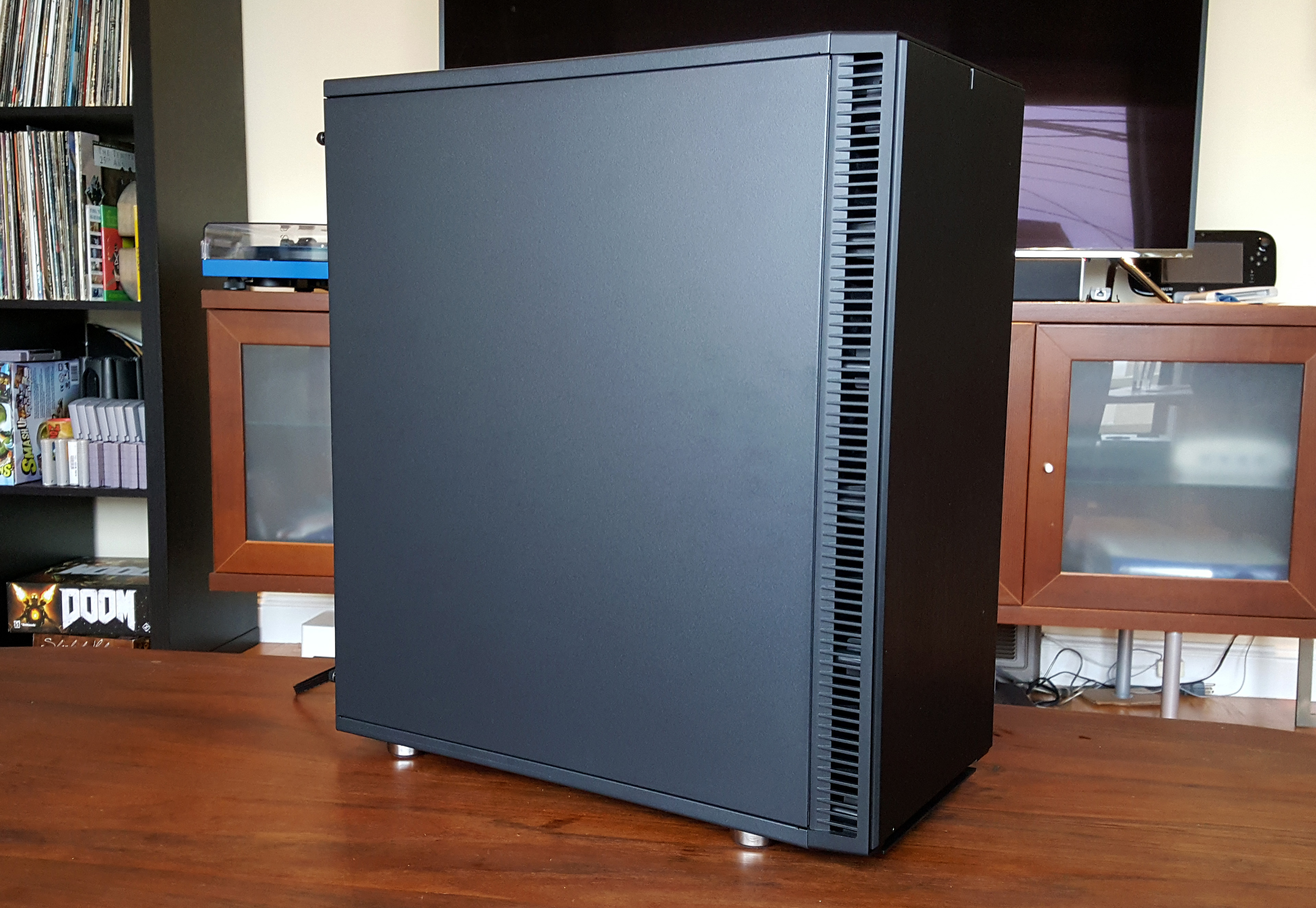
I didn't kick my old gaming PC as often as I wanted to. After a year in each other's company, we just weren't getting along. This hand-me-down from Maximum PC had a powerful (but old) Sandy Bridge Extreme CPU, which I was redlining at a 4.2GHz overclock to run demanding games. Too many cores, not enough clockspeed. When the old liquid cooler's fan controller stopped working, I was stuck with three fans running at a constant volume somewhere between air conditioner and weed wacker. Every night the motherboard's bright red LEDs, impossible to disable in the BIOS, glared at me through the NZXT Phantom's clear side panel until I got out of bed and cut off its power completely. We just weren't getting along, and so I decided my next PC build would be the opposite of this one: dark, compact, and most importantly silent.
With the release of Intel's new Kaby Lake processors, the time felt right to build a brand new, quiet gaming PC. Not just quiet—as quiet as I could possibly get with standard components, while also reusing the parts from my old PC that were still going strong. And I wanted to do it all in a chassis far smaller than my last full tower build. No problem, right?
Here's the build I ended up with:
Intel Core i7-7700K CPU
Nvidia GTX 980 reference graphics card
MSI Z270 Gaming M5 motherboard
16GB Corsair Vengeance DDR4 RAM
NZXT Kraken X42 liquid cooler
Fractal Design Define C case
Fractal Design Integra 640W power supply
Corsair ML140 and ML120 fans
1TB Crucial M550 SSD, 500GB Intel 730 SSD SSD, 3TB Western Digital Black HDD, 3TB Western Digital Green HDD
NZXT Hue+ RGB lighting kit
Thanks to Fractal and MSI for providing parts for the build, and NZXT and Corsair for keeping us stocked with their latest cooling components.
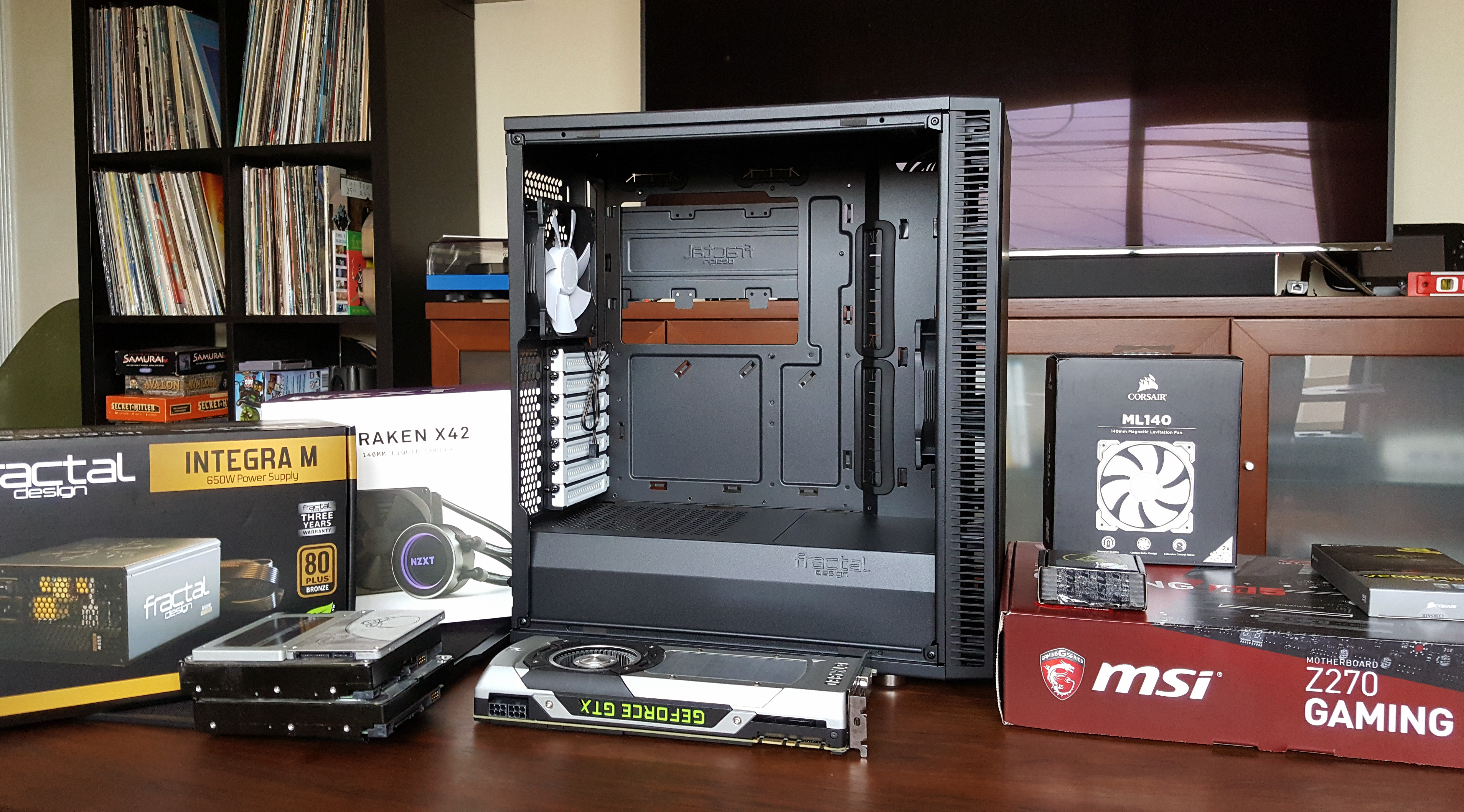
The idea for this build started with the case: two years ago I built a home server in a Fractal Design Define Mini, which was perfect for my build: it has trays for six hard drives, can fit a micro-ATX motherboard, and comes equipped with Fractal's standard sound dampening on the front and side panels. The soundproofing keeps it quiet, and the black obelisk design is my kind of minimalism. The Fractal Design Define C fits a similar bill: it's a compact ATX case at 440mm tall and 200mm wide, but it still makes room for two hard drive trays and three SSD mount points. Though the Define C comes with an optional window panel, I opted for the standard side panel with sound dampening to keep the case as quiet as possible.
To fit my rig into the Define C, I'm actually giving up a third HDD, an older 1TB WD Black. Between my home server and cloud storage, I think I can learn to live with space for two drives (especially with 10TB HDDs out there these days). I've also got ample space for SSD expansion, with one free bracket and dual M.2 slots on the MSI Z270 Gaming M5.
The biggest gaming news, reviews and hardware deals
Keep up to date with the most important stories and the best deals, as picked by the PC Gamer team.
Ready set build
I started my build by installing the Gaming M5, which is a really pretty board—I appreciate the understated silver instead of the usual black and red gaming colors.
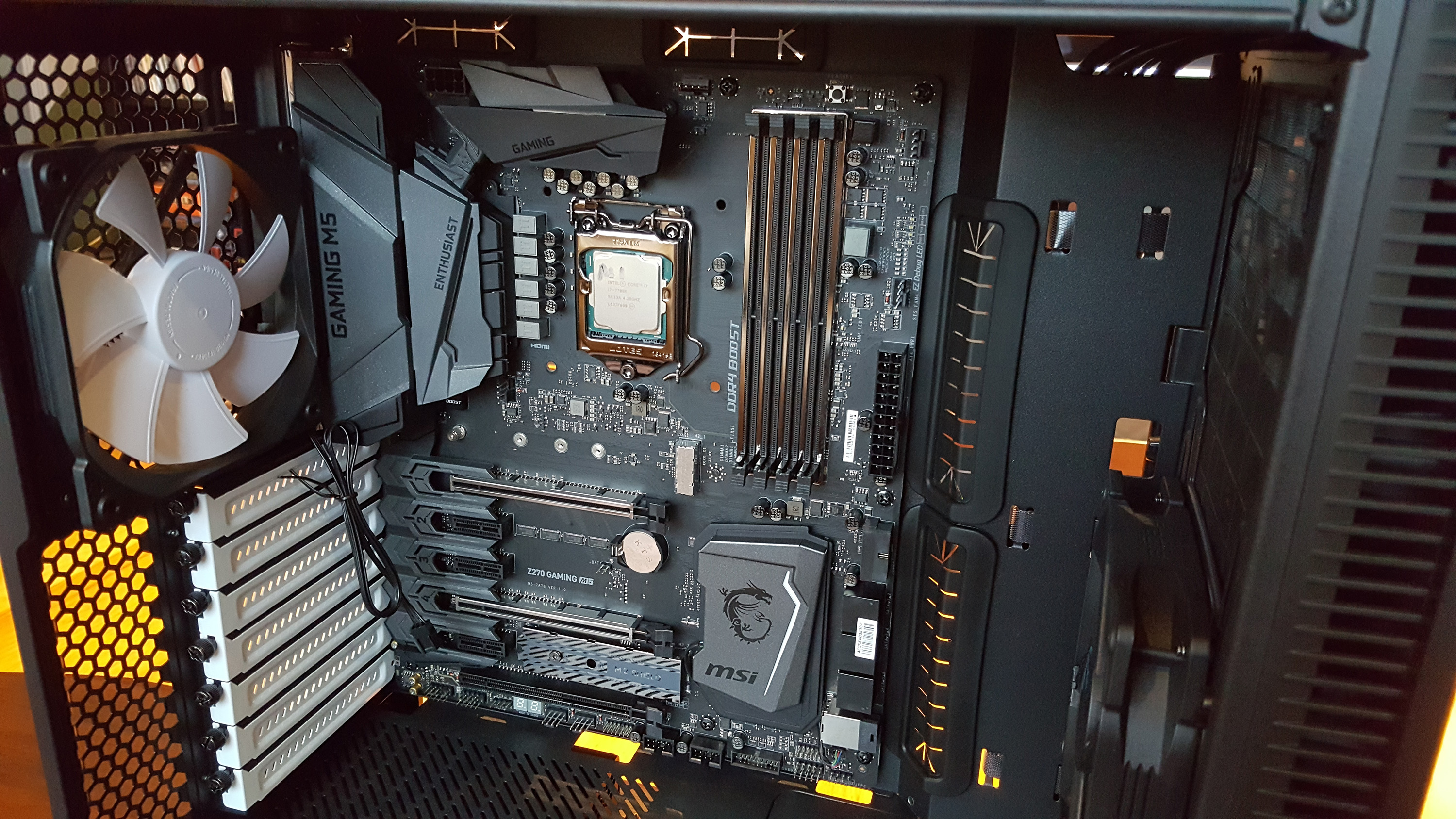
Then I popped off the front panel to gain access to fan mounts. The Define C can fit two 140mm or three 120mm fans up front, and has a removable top panel with room for two more fans. But I want to keep that top panel sealed up, because opening that space up will make for a louder system. That means my 140mm radiator and two 140mm fan will go up front, pulling cool air in, with a 120mm exhaust in the back.
Rather than mixing and matching fan sets, I opted to try out Corsair's new "magnetic levitation" fans. I admit the marketing hooked me: they must be super quiet, right!? Well, it turns out they can be, but they can also be really loud, as I discovered later. The ML fans had another perk for my build: they're a hybrid design meant to meet the demands of high airflow and high static pressure, which means they're adept at general case cooling and cooling a radiator.
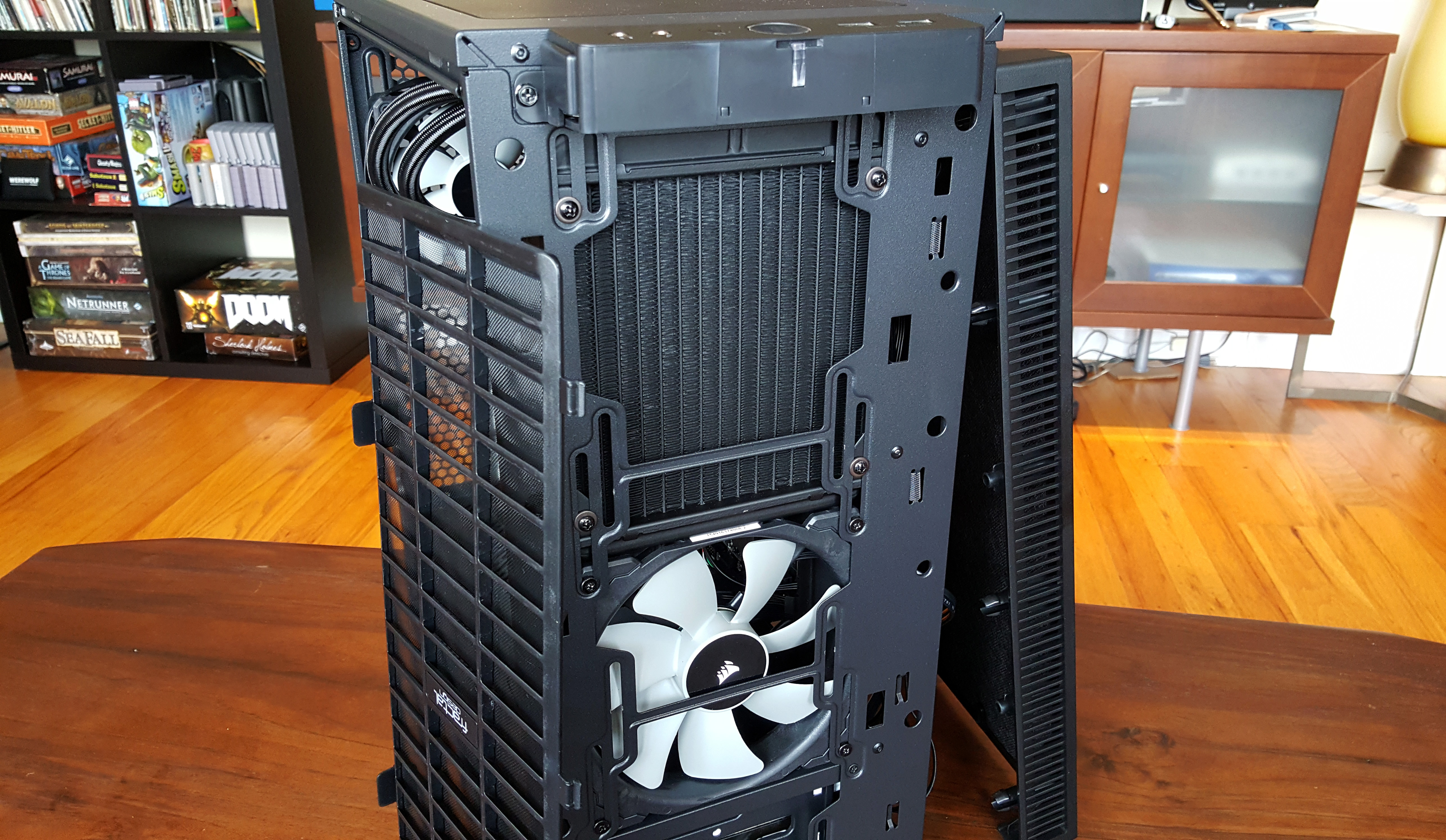
I removed Fractal's included fan and mounted an ML140 at the bottom, then stuck the NZXT radiator above it with another fan attached. Then it was time to mount the radiator, which is the main reason I went with a closed-loop cooler instead of a more traditional air cooler. The Kraken X42. NZXT's CAM software allows for a great bit of control over the cooler and system monitoring at the same time, and it's physically easy to install, with a thermal pad ready to go and just a few bolts to fit through the back of the motherboard. It has a small footprint in the case, and that makes it much easier to work with than ultra-quiet air coolers and their giant fans.
Fractal has a clever removable bracket on the back side of the chamber that holds three SSDs. Take it off to attach the SSDs and gain access to the motherboard backplate at the same time. Efficient! After installing my storage, popping in the RAM, and running cables, I came to my last cooling change: swapping the Fractal exhaust fan in the rear with a Corsair ML120. That took a fraction of the time it took to wire everything. The downside to the Define C's PSU shroud is that it makes for tight quarters around the power supply—my hand just barely fit into that space when I realized I needed to add a molex power cable. I need a kid with tiny hands to help me out on compact builds like this one.
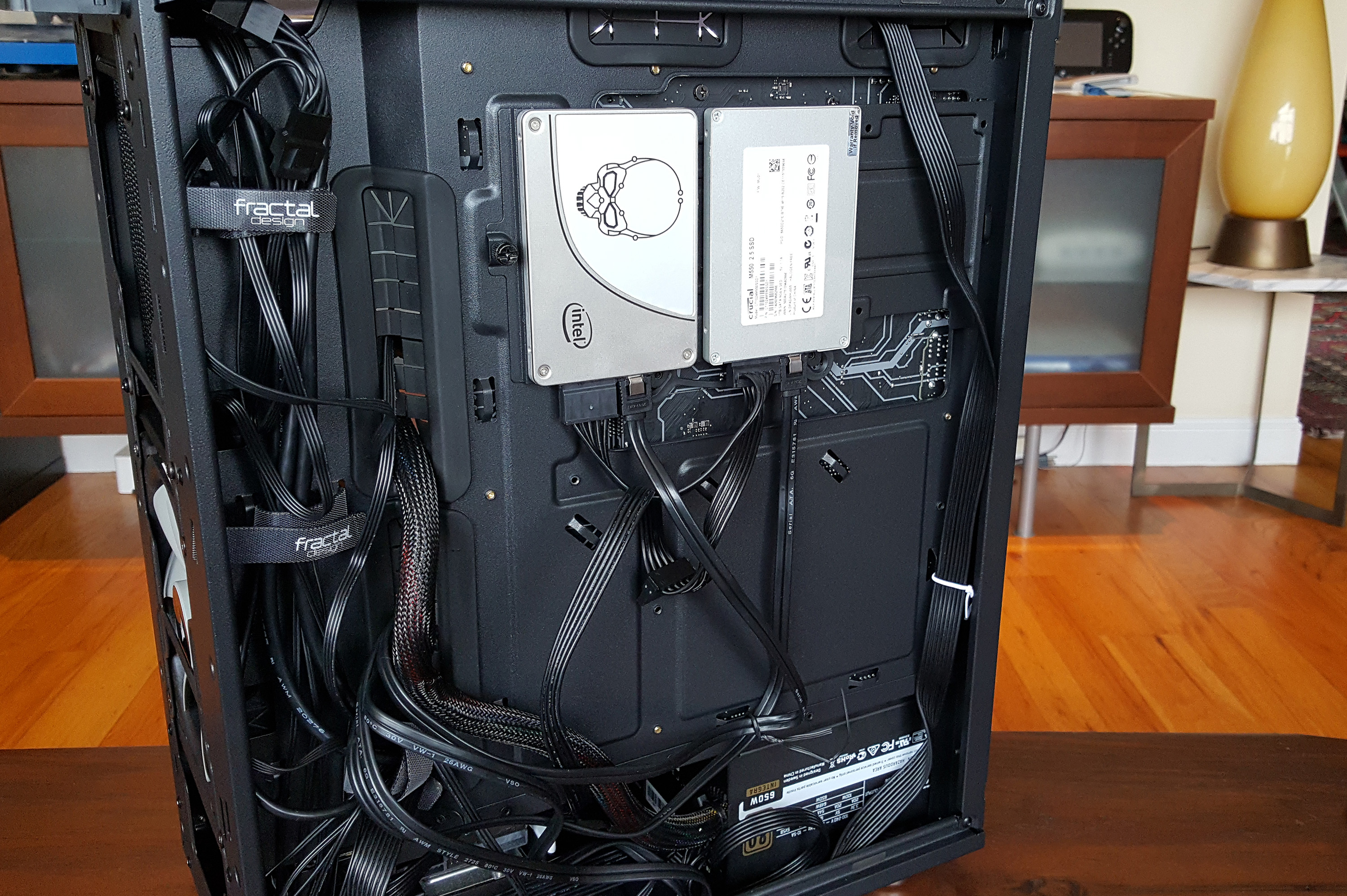
The last major component is also the weakest link in my cooling chain: the GTX 980. Because this is a reference card, it's equipped with Nvidia's stock blower, which runs perfectly quietly on idle and not-so-quietly when it ramps up. For a later improvement to this build, I'd like to upgrade with a quiet GTX 1070 or 1080, or potentially a new AMD Vega card. Priority #1 is a PC I can't hear when it's simply on; priority #2 is keeping it quiet during gaming, too.
For a final touch, I attached NZXT's Hue+ RGB lighting kit to the top of the PSU shroud and threaded its cable through one of the expansion slots. I want some RGB backlighting for my desk, not the case itself.
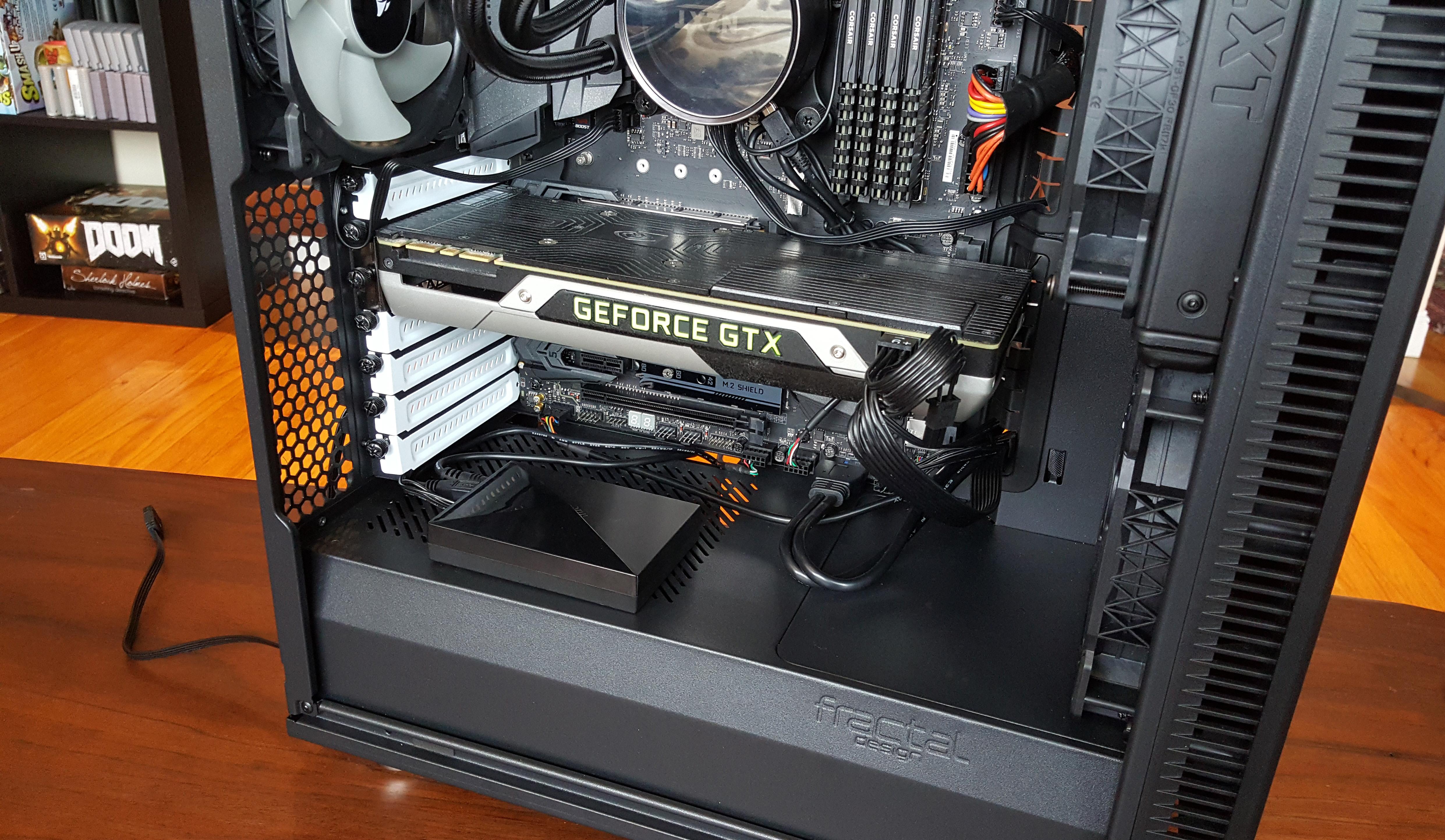
And that's a complete build!
Cool under pressure
Miraculously, on boot Windows spent about five minutes adjusting to the new hardware changes, then loaded into my existing Windows installation like it was business as usual. Microsoft has gotten way better at handling hardware changes over the years, which makes system upgrades much less of a headache.
Still, once I got into Windows my new "silent" PC wasn't working quite as intended. The fans were loud. Really loud. Turns out, Corsair's magnetic levitation fans are hardly quiet at high RPMs, and the MSI Gaming M5's BIOS decided to run them at minimum 50 percent speed, which was 1200 RPM. This thing was suddenly louder than the PC I just replaced. I started sweating.

But no problem, right? Easy to fix, surely. I went into the BIOS and made sure the fans were set to PWM operation, which allows for more variable control, and then turned on "smart" fan control and hopped back into WIndows to check things out. What I hadn't noticed was that smart mode left the minimum fan speed at 50 percent, and spiked all the way up to 90 percent for higher temperatures. With the CPU fan also temporarily set to smart mode, every minor Windows operation, like opening up a new application, sent the fans briefly screaming into overdrive. It was comically loud for a PC actually running at completely normal temperatures.
Going back into the BIOS, I disabled smart mode and dragged the fan power all the way down to 0 percent in MSI's chart, which then let the ML fans run at their minimum speed of around 400 RPM.
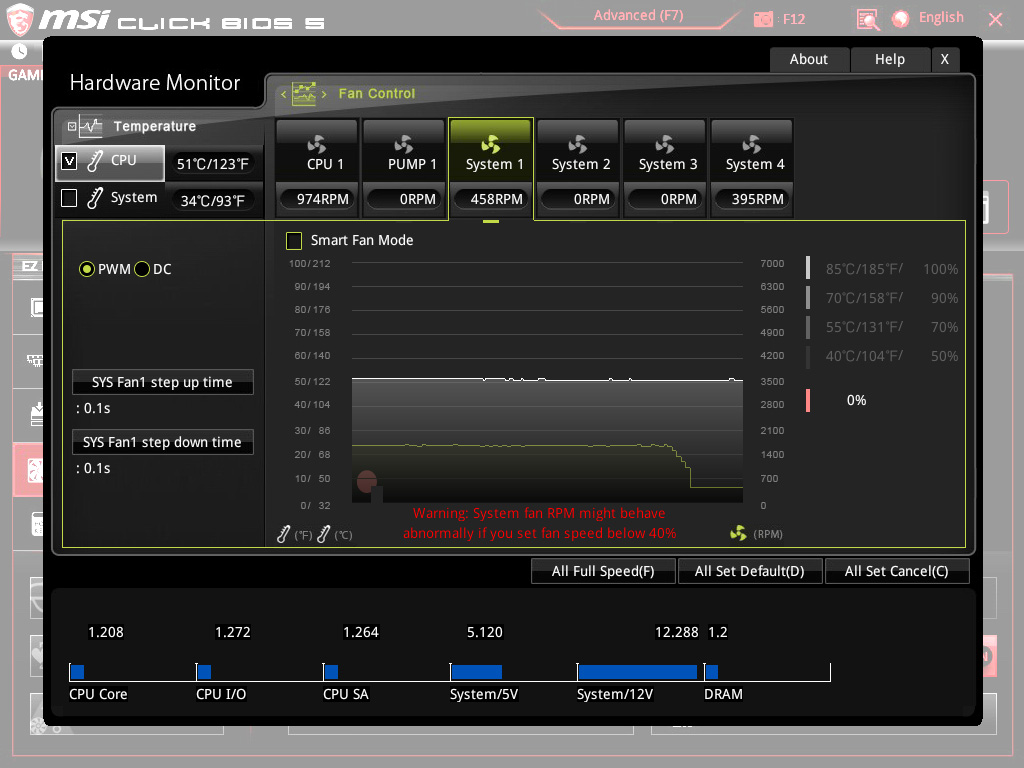
And then...silence.
Well, almost. As I sit at my PC now, I can still hear one thing: the hard drives! The little guys are clicking away, and the Fractal case's sound dampening isn't quite enough to silence them completely. Now with my fans operating at low speeds, the CPU idles around 32C and the overall system temperature at 36C. I could definitely run the fans at a higher RPM and keep the system quiet, and I'll probably customize a new smart fan control curve to run at more sensible RPMs when things heat up.
And that's inevitable, because it's only a matter of time until I overclock the CPU, and upgrade the graphics card… and overclock that, too. Then the real silencing challenge begins.
Some online stores give us a small cut if you buy something through one of our links. Read our affiliate policy for more info.

Wes has been covering games and hardware for more than 10 years, first at tech sites like The Wirecutter and Tested before joining the PC Gamer team in 2014. Wes plays a little bit of everything, but he'll always jump at the chance to cover emulation and Japanese games.
When he's not obsessively optimizing and re-optimizing a tangle of conveyor belts in Satisfactory (it's really becoming a problem), he's probably playing a 20-year-old Final Fantasy or some opaque ASCII roguelike. With a focus on writing and editing features, he seeks out personal stories and in-depth histories from the corners of PC gaming and its niche communities. 50% pizza by volume (deep dish, to be specific).

